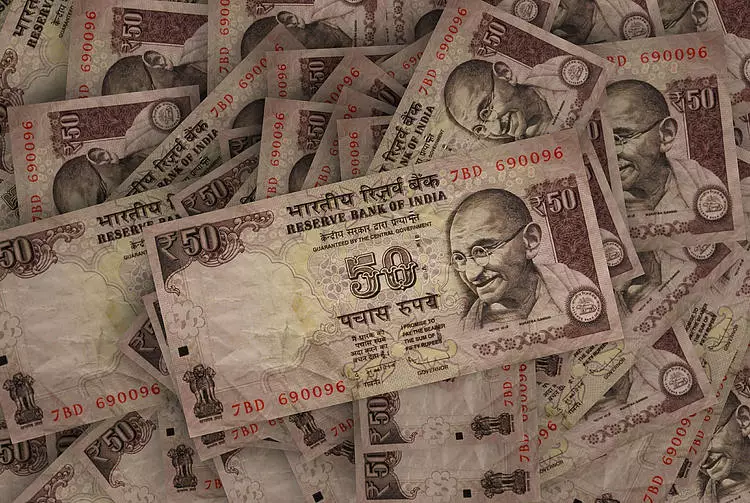In the latest trading session, the Indian Rupee (INR) continues to show signs of weakness against the US Dollar (USD), marking its third consecutive day in negative territory. The currency’s recent performance underscores the increasing demand for USD, set against a backdrop of fluctuating crude oil prices, significant foreign fund outflows, and broader economic anxieties. On Tuesday, as investors pivot their attention towards forthcoming manufacturing data from both the United States and India, the INR’s vulnerability is further exposed.
The rupee is currently under pressure due to multiple macroeconomic factors. Among the primary drivers are strong purchasing from foreign banks and the ongoing volatility in crude oil prices—intensified by geopolitical tensions in the Middle East. As India is heavily reliant on imported crude oil, fluctuations in oil prices have direct implications for the INR’s stability. The Reserve Bank of India (RBI) has intervened in the currency markets in recent times to facilitate trade and curb excessive volatility, yet the challenges persist.
Investor sentiment is also being shaped by the upcoming releases of the HSBC India Manufacturing Purchasing Managers Index (PMI) and the US ISM Manufacturing PMI for September. These indicators are crucial as they offer insights into manufacturing growth and can influence market movements. The PMI readings often affect currency values as they reflect economic health, which in turn relates to currency strength or weakness.
Furthermore, the Federal Reserve’s signals regarding interest rate adjustments loom large over financial markets. Fed Chair Jerome Powell’s recent comments suggest a more cautious approach towards future rate cuts, which may alleviate immediate market fears but also imply that the current inflation context remains a complicating factor. Market participants are now gauging the likelihood of various cuts in rates, with futures indicating differing probabilities for both a half-point and a quarter-point rate reduction.
From a technical standpoint, the USD/INR currency pair is exhibiting a bullish trend. The price remains above the crucial 100-day Exponential Moving Average (EMA), hinting at potential further upward momentum. Nevertheless, the 14-day Relative Strength Index (RSI) indicates a neutral position, which suggests the possibility of consolidation in the near future. The psychological threshold of 84.00 remains a point of contention among traders. A break above this level could propel the pair higher to 84.15, while support at 83.62 provided by the 100-day EMA could act as a buffer against further declines.
Lower rankings, however, could lead the USD/INR pair to revisit key support levels at 83.00, which corresponds to the low witnessed in late May. These technical levels provide traders with important benchmarks, guiding potential entry and exit points.
Broader Economic Considerations Influencing the INR
The Indian Rupee is particularly susceptible to global economic forces. Key factors include crude oil price fluctuations and the dominant role of the US Dollar in international trade. India’s rising current account deficit, reported at $9.7 billion for the April–June quarter, signifies broader economic challenges, equivalent to 1.1% of gross domestic product (GDP). Such deficits typically exert downward pressure on the currency, increasing the urgency for foreign investment inflow.
Moreover, the RBI plays a pivotal role in managing the fabric of the Indian economy via interest rate adjustments and direct interventions in foreign exchange markets. Monetary policy decisions significantly impact inflation rates, which have a reciprocal relationship with the strength of the INR. Ideally, higher interest rates tend to attract foreign investments via the ‘carry trade’, creating upward pressure on the rupee’s value. Nonetheless, if inflation rates surpass those of its trading partners, the rupee encounters depreciation as it reflects a diluting monetary environment.
The Future Outlook for the INR
In summation, the Indian Rupee faces a rocky road ahead, characterized by external economic pressures and an intricate web of domestic factors. As the global economic environment continues to evolve, marked by uncertainties surrounding oil prices and the Federal Reserve’s monetary policy, the INR’s trajectory remains contingent upon a myriad of indicators and events. Investors, traders, and policymakers will be closely monitoring these developments, as they are pivotal in shaping the future value of one of Asia’s key currencies. Navigating these turbulent waters will require a clear understanding of not just the immediate financial landscape but also the broader geopolitical dynamics that continue to influence market behavior.

